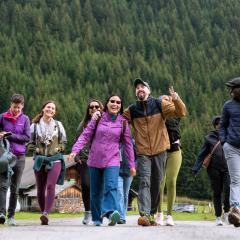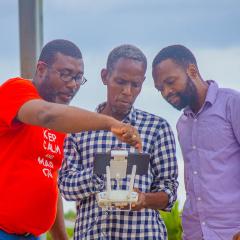
People Power in the Age of Robotics
May 30th, 2019
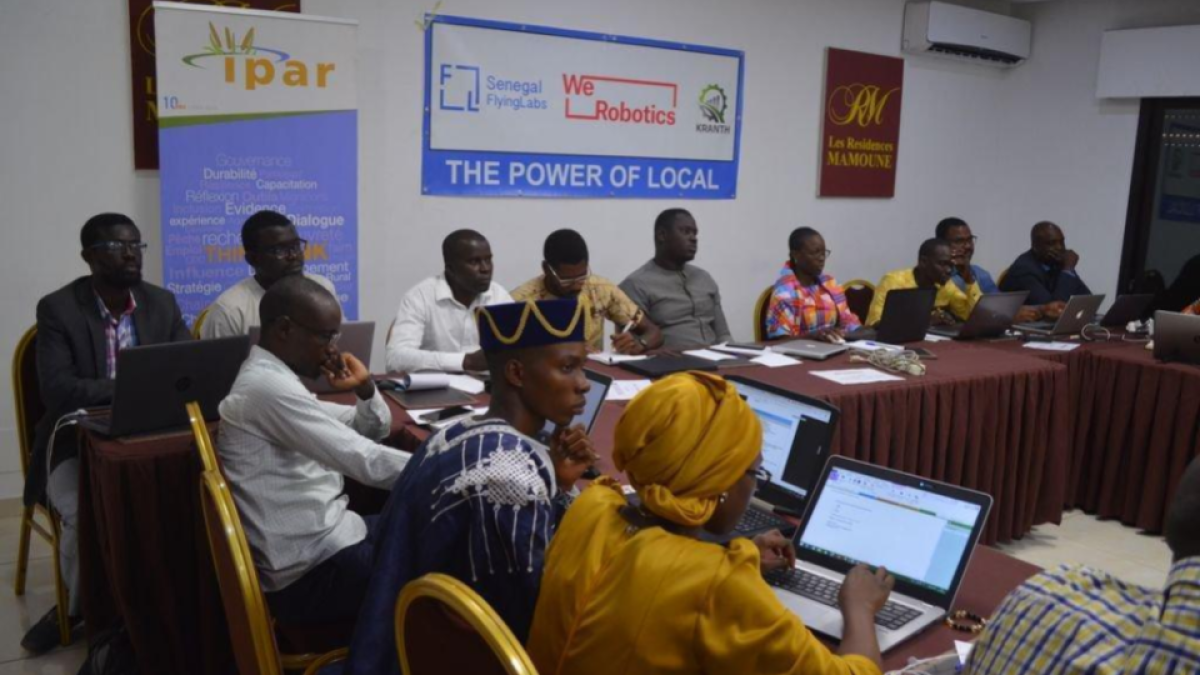
This is an opinion piece by the co-founders of WeRobotics. The piece is based on opening remarks made at WeRobotics Global 2019.
The blue planet we call home has become a lot more fragile than we may like to admit. Life on this little pebble of rock is facing mounting challenges, some unprecedented, from the climate crisis, humanitarian disasters and health emergencies, to extreme inequality, runaway pollution and dangerous democratic deficits. We may not be able to get out of any of these challenges without some level of automation – without some ability to do a lot more, with less, a lot quicker. But centralizing this ability would have disastrous consequences.
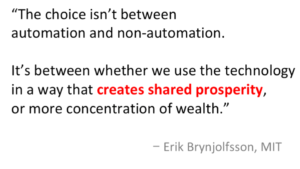
The more important question before us is not whether or not to use automation to overcome the mounting challenges we face. The real question is whether we use emerging automation technologies like robotics to create equal opportunity and shared prosperity or whether we use these technologies to do the direct opposite.
So, which path will we take? Will it be a world driven by equal participation, inclusive solutions and shared prosperity or one catering only to the whims of the mighty who are totally disconnected from reality? Either way, what’s certain is that technology will not make that decision for us. Technology alone is not going to create equal opportunity. It’s all going to come down to the We, like the We in “WeRobotics”, the human we, “We the People”. It’s all going to come down to leadership, enlightened, inclusive, bold leadership. Afterall, technologies come and go. Truly representational leadership is what is going to make the difference ultimately, not technology.
Diversity, inclusion and equity are not just checkboxes for us to tick off and move on with business as usual. If women and different ethnicities are not using their expertise and creativity to solve the problems on this planet, then, as someone else recently put it: we simply won’t have the requisite expertise to address the issues we face, thus rendering the entire attempt to overcome the issues fatally flawed.
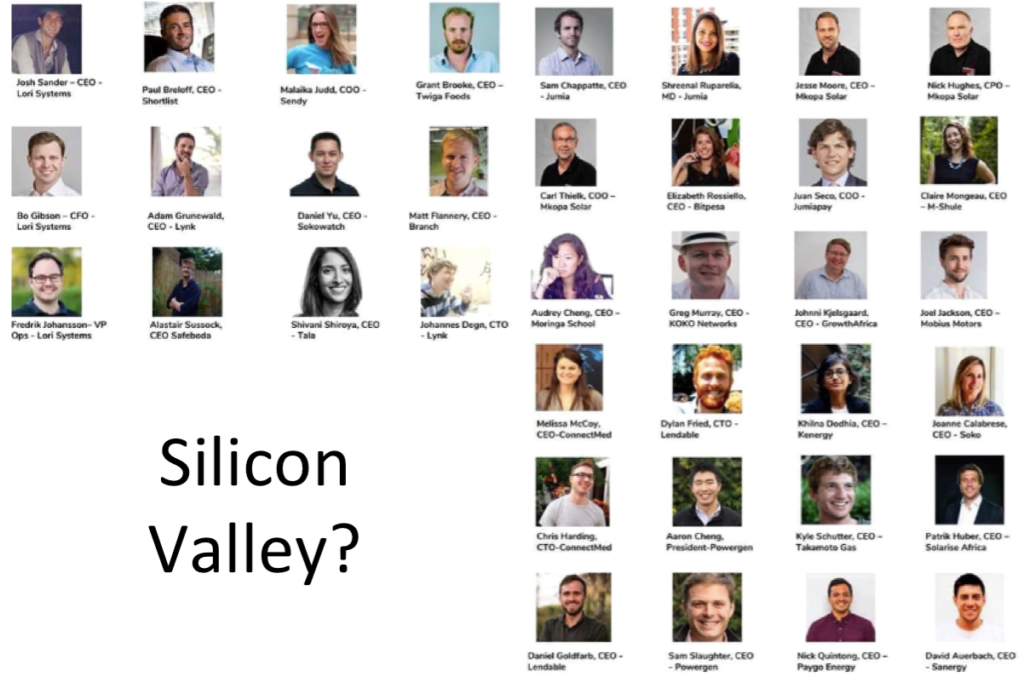
So what happens when leadership is anything but representative, anything by diverse and inclusive? Does that leadership really create equal opportunity and shared prosperity? You might look at the faces above and know that this lack of diversity in Silicon Valley is basically standard, par of the course. But the executives pictured above are the executives of the leading technology companies and startups in Kenya. This is what the Kenyan startup scene looks like. And Kenya is certainly not the exception but rather the rule when it comes to technology and diversity. Does this homogeneity lead to equal opportunity and shared prosperity? We don’t think so, quite the opposite in fact.
The lack of diversity leads to groupthink. Groupthink leads to selecting problems that are only important to the homogenous group. Groupthink leads to developing homogeneous solutions to these select problems—solutions that will inevitably share some of the same flaws. This explains why foreign technology companies are focusing on optimizing the technology rather than optimizing the solution. But problems are not just technical in nature. This is why solutions must be social. Solutions must be local. Solutions are diversity and inclusion.
So, the way we see it, there are at least two possible futures for the role robotics and AI in society. One possible future is the Star Trek universe: beautiful, advanced, sexy technology; a universe where everything works. This is the world that foreign technology companies are designing for. They’re designing for the Star Trek universe because that’s where they come from. They’re designing for themselves. They’re not designing for the Majority World.
Another possible future for the role of robotics and AI looks a lot more like the Star Wars universe. In this future, technology does break; drones and robotics are far from perfect. So how do we make things work in this universe? We have to improvise and collaborate openly; we need a diversity of creative solutions; we need inclusive participation. This is the universe that WeRobotics finds itself in. We’ve learned first hand that robotics doesn’t have to be sexy, it just needs to work. It doesn’t need to look like Star Trek, it just has to get the job done.
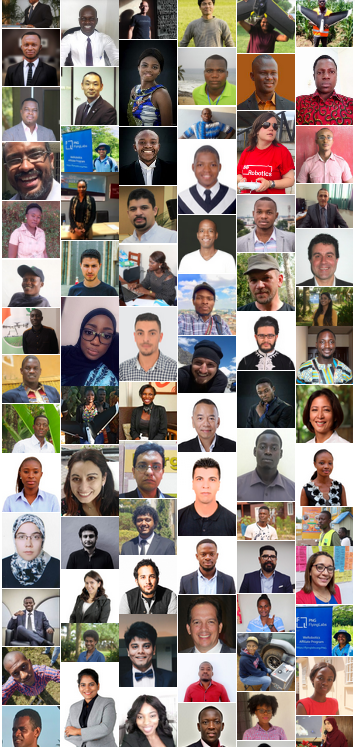 This photo of local experts, local engineers and local entrepreneurs who run Flying Labs in Africa, Asia, Latin America and Oceania represent the world we at WeRobotics want to live in. Without this kind of diversity and inclusion, we simply won’t have the requisite expertise to address the issues we face. The whole point of the Flying Labs network is to create a world we want, a world based on equal opportunity and shared prosperity.
This photo of local experts, local engineers and local entrepreneurs who run Flying Labs in Africa, Asia, Latin America and Oceania represent the world we at WeRobotics want to live in. Without this kind of diversity and inclusion, we simply won’t have the requisite expertise to address the issues we face. The whole point of the Flying Labs network is to create a world we want, a world based on equal opportunity and shared prosperity.
The Flying Labs network was launched in 2016 with 3 Flying Labs. Today, 3 years later, Flying Labs are operational in 23 countries – all driven by local demand from local experts who want to be included. Our role at WeRobotics is to enable local experts in the Flying Labs network to tackle the problems they are most concerned about. We do this by providing trainings and transferring appropriate technology. Equally importantly, and increasingly, we do this by connecting Flying Labs to each other. Last week, for example, Senegal Flying Labs informed us that they were expecting to work on a mangrove-monitoring project. As it turns out, both Panama and South Pacific Flying Labs have previously worked on mangrove monitoring, having learned valuable lessons that have informed their best practices. As such, Panama and Pacific Labs can directly support and train Senegal Flying Labs to ensure they are successful in their important work in West Africa.
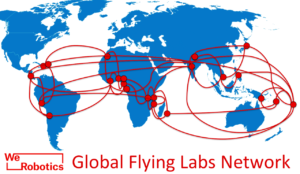
Flying Labs train each other, partner on joint projects and create national as well as regional ecosystems that connect key actors in government, industry and other sectors. This creates a multiplier effect and enables the Flying Labs network to scale more quickly. What’s more, the Flying Labs model is designed to enable these labs to become self-sustaining. This is the ultimate endpoint. We want to continue to meet this strong local demand for Flying Labs, this local demand for access, inclusion and equal opportunity. We want to continue supporting hundreds of local entrepreneurs across hundreds of labs, engaged in thousands of local projects, improving the lives of millions.
The world is changing, and it’s changing fast. Many of the jobs that local professionals would get just 10 years ago are dramatically changing because technologies are dramatically changing. So local professionals are looking for new opportunities, new solutions, new skill sets and new startup opportunities. They want to be included. But you saw what the startup scene looks like in Kenya. This needs to change.
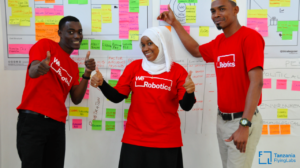
When we talk to local experts, local entrepreneurs, local engineers and local changemakers across the Flying Labs network, none of them are looking for a handout. What they want is equal opportunity. That’s all they’re asking for. What they deserve and what they’re asking for is a global economy that is fundamentally fairer.
Recent Articles

